Hi Everyone,
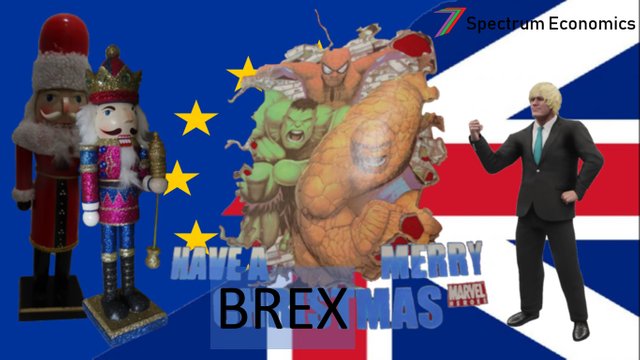
The 2019, UK General Election is being widely called the ‘Brexit Election’. For the most part, I would say that is accurate. However, a few other factors contributed to the results. These factors include the popularity of the leaders, the first past the post system, party’s manifestos, and other issues that were ranked important such as the National Health and the Environment.
The Conservative Party won by a very clear majority of 80 seats (the number of the seats more than all other parties and candidates combined) and 162 more than the Labour Party (party with second highest number of seats). This means that the new Conservative Government should be able to get any of their proposed bills through parliament. The Brexit Withdrawal Agreement should pass through parliament with ease, as all the Conservative Members of Parliament can be expected to vote in favour of it.
If you strongly support leaving the European Union, the result of the election can be considered a good outcome. However, the type of Brexit is still very much undecided. Boris Johnson has been in favour of a harder Canada Plus style of Brexit. I am not sure how long such a deal will take to negotiate with the European Union and how accommodating they will be. I believe the European Union will most likely be pushing for a softer Brexit, which will keep the United Kingdom tied to many of their rules, laws and standards. If the United Kingdom Government and European Union cannot reach a deal by the end of 2020, the United Kingdom will leave with a ‘no deal’ Brexit, which is a strong fear of the opposition parties.
Why we got this election result?
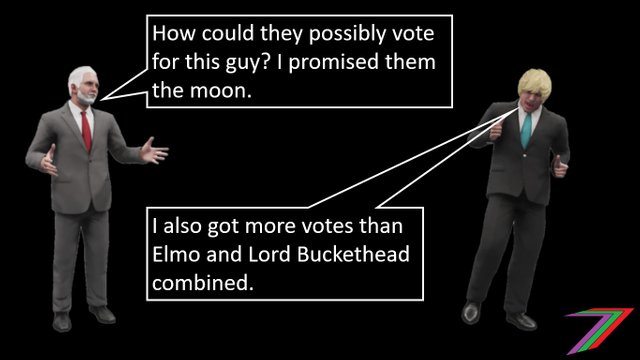
The first reason would be Brexit and historic party allegiance. Supporters of Brexit are not defined by party allegiance. Existing members of parliament mostly obtained their seats based on existing party loyalty. For many voters they had a choice of continuing to support the same party based on traditional party allegiance or support the party that aligned with their belief regarding Brexit. The Conservative Party had a clear message of supporting Brexit and the currently proposed Withdrawal Agreement. The Labour Party had openly opposed any form of proposed Brexit Agreement in Parliament but campaigned on a convoluted Brexit proposal, which involved a new Withdrawal Agreement and a second referendum. The Labour Party could have either supported Brexit and proposed an alternative Withdrawal Agreement with no follow-up referendum or proposed to take the Boris Johnson Withdrawal Agreement to a second referendum and campaign for remain.
The Labour Party also suffered from having a very unpopular leader. Even though parties and constituency candidates are elected, campaigns strongly focus around the party leader. The opinion that the public have of the leader plays a huge role in determining the number of votes the party receives. The tracker below shows that Jeremy Corbyn (Labour leader) was considerably less favourably to Boris Johnson (Conservative leader).
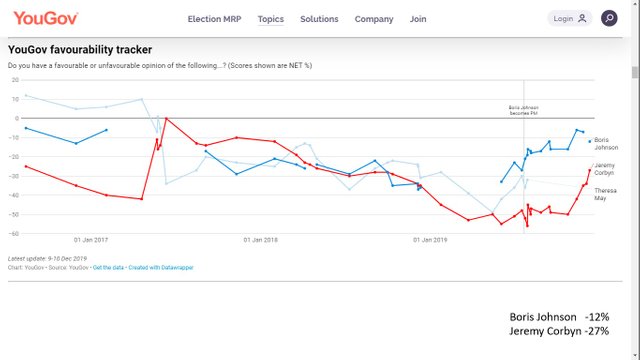
Source: YouGov, accessed 17/12/2019
The Labour Party manifesto worked against the Labour Party, as it was full of unrealistic promises, which were claimed to be funded by just the top income earners. The manifesto had a very strong socialist emphasis, which was unlikely to win over Conservative ‘remain’ voters. The Labour Party needed to win votes from ‘remain’ voters as they were at a risk of losing Labour seats, which had a high percentage of ‘leave’ voters. Below is a quick snapshot of how parties performed in strong ‘leave’ and strong ‘remain’ seats.

Source: BBC, accessed 17/12/2019
The first past the post electoral system worked strongly against the Labour Party as the ‘remain’ voters were split between the Labour Party and Liberal Democrats Party (LDP). There were attempts to tactical vote to offset the first past the post system but it appeared to have failed in most seats with the only success in St. Albans, which was won by the LDP.
The Conservative Party ‘leave’ vote was not split in Conservative held seats as the Brexit Party did not stand Brexit candidates in them. The Brexit Party stood candidates in Labour held seats providing ‘leave’ voters with an alternative to the Conservative Party. See figures from the Financial Times below.
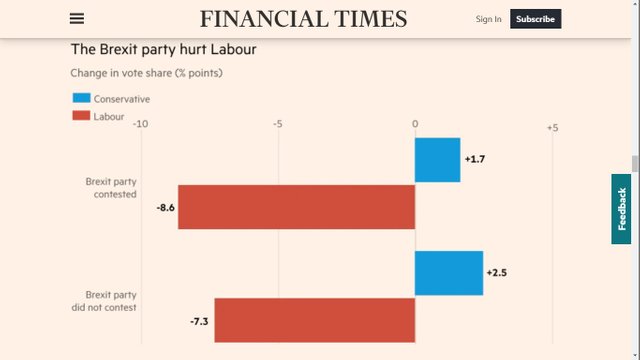
Source: Financial Times, accessed 17/12/2019
Brexit may have been the biggest issue of the 2019 election but it was not the only important issue. YouGov obtained information from the public about which issues they considered were most important for the election. Each person was to select 3 key issues. As can be seen from the figure below.
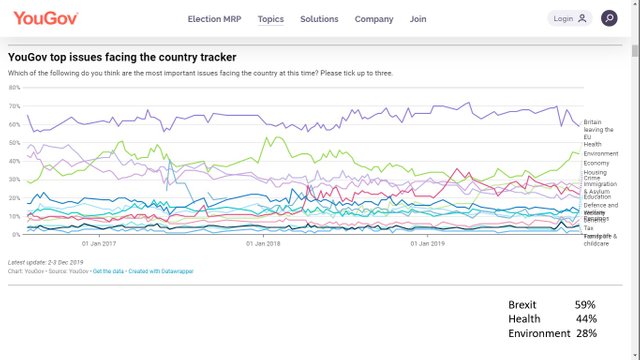
Source: YouGov, accessed 17/12/2019
National Health was considered by almost half the population to be a key issue. Other issues such as the environment, crime, housing, and education were given some importance. The Conservative Party made several promises about making improvements. However, the public opinion of how the Conservative Party handled these issues prior to the election was low as can be seen from the figures below.

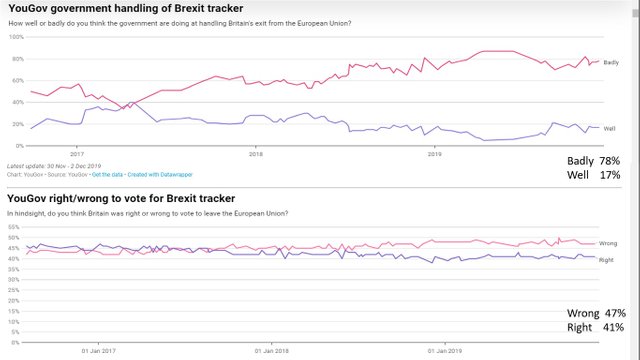
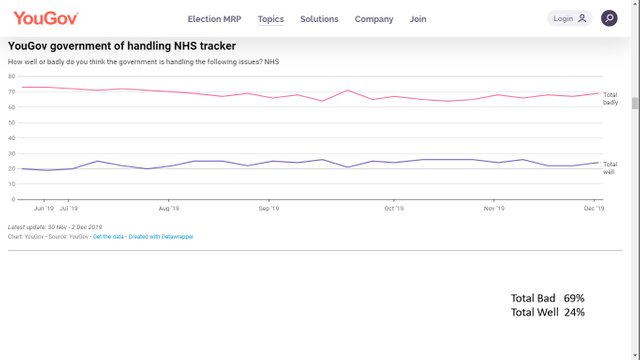
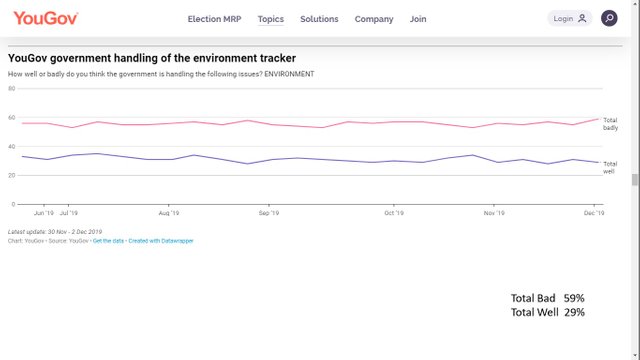
Source: YouGov, accessed 17/12/2019
Labour did not appear to be able to make gains despite the Conservative Party's perceived poor performance. This was most likely because their manifesto lacked credibility.
Was the result surprising?

Polls had consistently predicted a Conservative majority throughout the campaign. The polls showed the Conservative Party had at least a 10 point lead over the Labour Party throughout the campaign but they also showed that gap had narrowed from when the election had been announced. See figure below.
![]()
Source: YouGov, accessed 17/12/2019
YouGov was predicting a small Conservative majority with the possibility of a hung parliament. Instead, the Conservative Party won a very convincing majority. Even though the extent of the win may have been off, the percentage of people voting for each party was very accurate as can be seen from the table below.
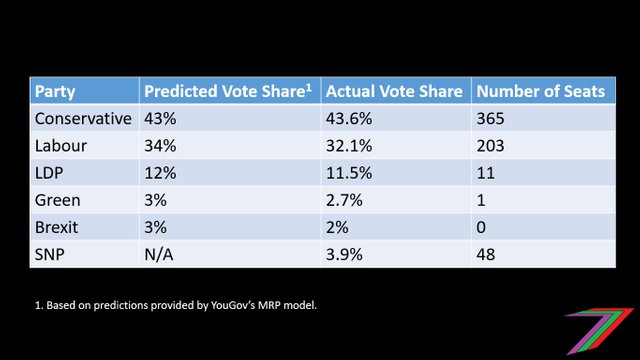
The extent of the margin also relates to the distribution of votes as much as it does to the total number of votes cast. The Scottish National Party (SNP) obtained less than 4% of the vote but won 48 seats. SNP only contested seats in Scotland but even in Scotland, the SNP only obtained 45% of the votes but won over 80% of the seats.
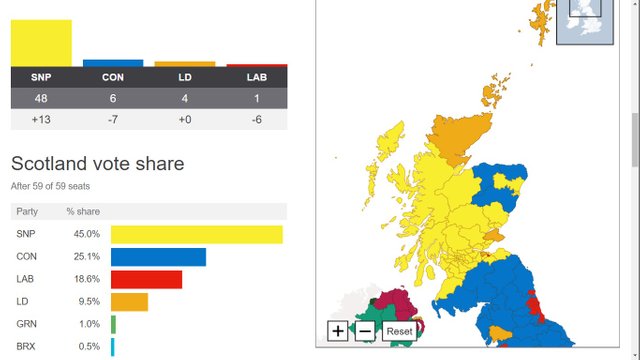
Source: BBC, accessed 17/12/2019
Was the result of the election a good outcome?
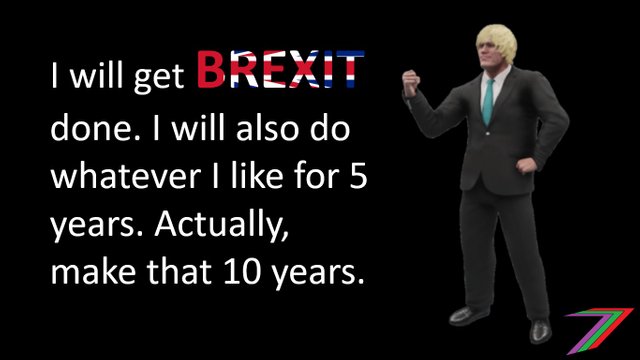
A majority Conservative Government will almost certainly get the United Kingdom out of the European Union. The amendment to the Withdrawal Agreement legally preventing an extension further solidifies this position. Therefore, some form of Brexit will happen. However, that might be the only good news. The very strong Conservative majority will not only mean the Brexit Withdrawal Agreement will pass through parliament with ease but many other bills will as well. This will give the Conservative Government a lot of power.
Back in mid-2019, I was very encouraged that there were four parties with an approximate equal share of the vote. It looked like the United Kingdom was finally breaking out of the two party system. After Boris Johnson became Prime Minister, the Conservative Party won back the support lost to the Brexit Party. It started to look more like a three party system. Not long after that, the LDP support started to drop and it started to look like a two party system again. The Labour Party could not fully absorb the LDP support, which was one of the reasons the Conservative Party obtained such a large majority.
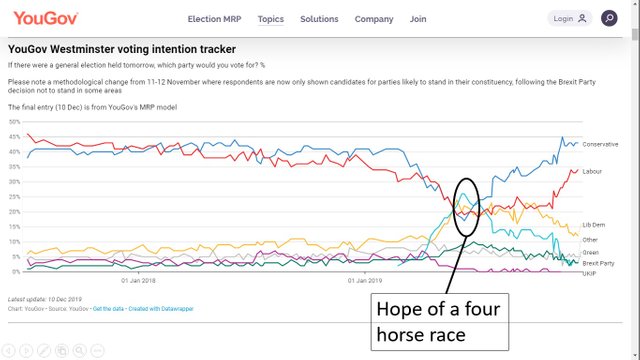
The large majority currently held by the Conservative Party is likely to prevent the growth of any of the smaller parties as voters opposed to the dominance of the Conservative Party will support the party most likely to challenge them, which will be the Labour Party. The current first past the post system strongly favours a two party system. The party with highest number of votes wins the seat in the constituency. This normally results in people voting for the most popular party or the party that will most likely challenge the most popular party.
If a preference voting system existed, people could vote for a third, fourth or even fifth most popular party and use their preference vote to support the major party they least dislike. This type of system provides greater opportunity for smaller party growth. However, I have seen the preference voting system struggle to give smaller parties representation; see my post, 'First-Past-The-Post Vs Preferential Voting Systems' for a detail critique of the preferential voting system.
A proportional representation voting system would also be fairer to the smaller parties as they could win seats based on percentage share of the vote rather than individual first past the post constituency results. According to the Electoral Reform Society, the results of the election would look as follows.
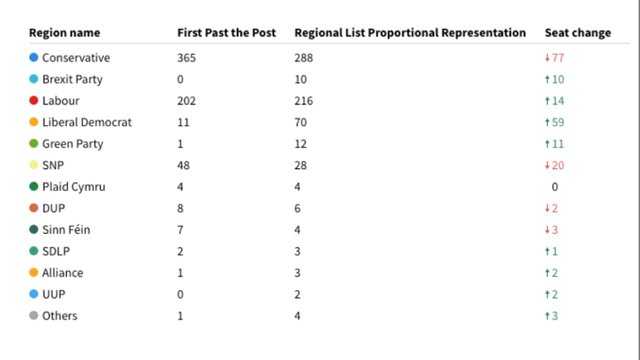
Source: Electoral Reform Society, accessed 17/12/2019
The performance of the Conservative Party based on public opinion has not been good. Overall approval ratings have been consistently below 25% for 2019. The minority Government and the strong resistance from opposition parties can be blamed for some of this but it also shows the inability of the Government to work with other parties and even maintain a good relationship with the Democrat Unionist Party (DUP), which supported them (confidence and supply agreement).
My previous prediction
If you have been following my Brexit posts, you would have seen that I made a few predictions about Brexit. I accurately predicted that the United Kingdom would not leave the European Union on 31st October and that there would be a General Election. However, I predicted the result of the election incorrectly. I predicted that many Conservative voters would switch to the Brexit Party. This would divide the 'leave' vote in many seats and therefore lead to a hung parliament. I then predicted the ‘remain’ parties would join to form Government. Instead, Conservative voters did not move their support to the Brexit party as they did earlier in the year. The Brexit Party did not contest Conservative held seats. Instead, the ‘remain’ vote was split between the Labour Party and LDP.
I also predicted a very high voter turnout. I think this prediction was about half right. The turnout was higher than 2001, 2005, 2010, and 2015 but slightly lower than 2017. The number of disenfranchised former labour voters and possibly the bad weather could have contributed to lower turnouts in some constituencies. There were also several constituencies where people had to queue for over half-an-hour to vote. See voter turnout for the past several elections below.
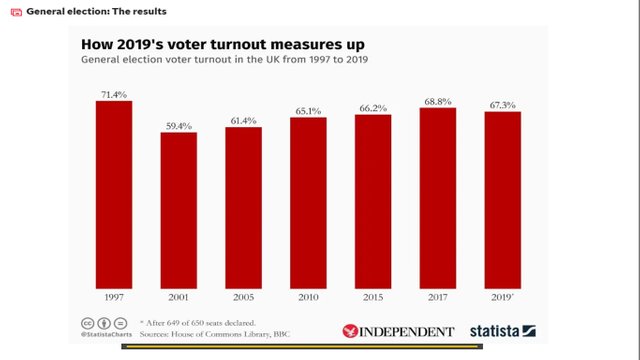
Source: Independent, accessed 17/12/2019
Summary

The 2019 General Election can be called the Brexit General Election. However, the results were also influenced by a few other factors such as public opinion of the leaders, the proposed manifestos, splitting of the ‘remain’ vote, and the first past the post system. Brexit should almost definitely happen now that the Conservative Party have such a large majority and extensions to negotiations are going to be legally ruled out. My hopes for reform to the political system is going to be very unlikely for many years to come.
I have previously written about different voting systems in my post, First-Past-The-Post Vs Preferential Voting Systems. I have written about the two party system in my post, The Two-Party Political System – The dictatorship we didn’t know we had. These two posts explain a lot more about the first past the post system and the problems of the two party system.
More posts

If you want to read any of my other posts, you can click on the links below. These links will lead you to posts containing my collection of works. These posts will be updated frequently.
Guide to the Steem Ecosystem (Udemy Course)

I have launched my Udemy course ‘Guide to the Steem Ecosystem’. This course takes you on journey through the Steem Ecosystem. The course consists of 6 sections. These sections are as follows:
- Getting Started
- Navigating Steem Frontends
- Becoming a Steem User
- Behind the Scenes
- The Wonders of the Steem Ecosystem
- Additional Content (SteemFest 4, SMTs, Communities, etc.)
The course contains 56 video lectures (about 13.5 hours of viewing), 56 multiple-choice questions (10 to 12 at the end of each section), and 59 downloadable resources (presentation slides and additional material such as white and blue papers). The course is free-of-charge. Click the link above to access the course.
I also have an economics course, titled Economics is for Everyone, which contains about 4 hours of video content.




Steem - The Future of DApps






understanding politics sometime goes over the head as you don't know the outcome it can be in anyone's side just like happened this time
Downvoting a post can decrease pending rewards and make it less visible. Common reasons:
Submit
It can be difficult to predict certain outcomes. I think I have learnt a thing or two from reflecting on the outcome of this election.
Downvoting a post can decrease pending rewards and make it less visible. Common reasons:
Submit
Hi @spectrumecons!
Your post was upvoted by @steem-ua, new Steem dApp, using UserAuthority for algorithmic post curation!
Your UA account score is currently 4.804 which ranks you at #1453 across all Steem accounts.
Your rank has not changed in the last three days.
In our last Algorithmic Curation Round, consisting of 106 contributions, your post is ranked at #65.
Evaluation of your UA score:
Feel free to join our @steem-ua Discord server
Downvoting a post can decrease pending rewards and make it less visible. Common reasons:
Submit
Hi, @spectrumecons!
You just got a 1.07% upvote from SteemPlus!
To get higher upvotes, earn more SteemPlus Points (SPP). On your Steemit wallet, check your SPP balance and click on "How to earn SPP?" to find out all the ways to earn.
If you're not using SteemPlus yet, please check our last posts in here to see the many ways in which SteemPlus can improve your Steem experience on Steemit and Busy.
Downvoting a post can decrease pending rewards and make it less visible. Common reasons:
Submit